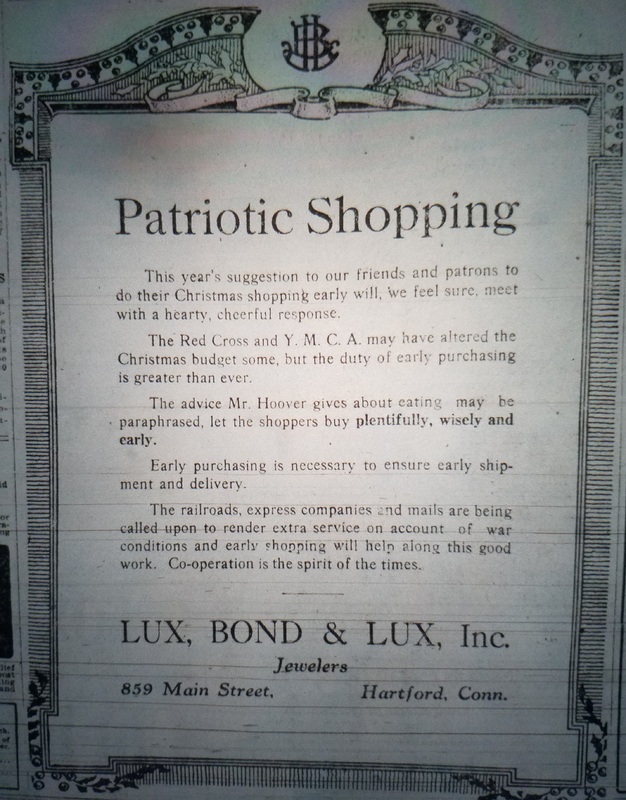Patriotic Shopping
Advertising and the CPI
Advertising, by its nature, is to get you to buy something. There are many ways to do so. Each in its own way is a manipulation. Earlier methods involved using wholesome methods. This soap will get you clean. This carriage rides nice. Images of little scamps eating cereal. All these choices were a way to get you to purchase their products, a manipulation. The Truth in Advertising system had recently been organized, and it was showing impressive success in the marketplaces. Truth in Advertising has its roots with the Banking Collapse of 1907. What came out of it was the idea that it was better to be directly honest with the consumer rather than make outlandish or childish claims. People were looking for sophistication, not merely tag lines and slogans. Ad men read that for them to be better at manipulating the people.
At about the same time as ad men finally codified their industry and began to self-regulate, the U.S. got involved in the Great War. George Creel, a former newspaper man who came of age during the time of William Randolf Hearst, petitioned President Wilson to form the CPI in response to the U. S. entry into the war. He experienced firsthand from Hearst, the Yellow Journalism which took the U. S. to war with Spain firsthand, and he had no intent to see his country engaged in another war based on false ideals, misplaced questions and rumormongering. He was perfectly positioned to pull the newly organized industry into alignment with the CPI. The end result was to merge private industry and government organization as it has never been done before in American history.
Through the CPI, Creel created the National Advertising Advisory Board (NAAB) which had the intent of providing aid to recruiting and money raising campaigns, all free of cost to the government. They would help advertisers work with the American government to essentially piggyback mottos and pay for messages which the CPI deemed important to be out in the public. The process which came out of the NAAB was spread across the nation for free. A universally American, pro-war message every citizen could unite behind, whereby individual companies would share ad space or donate it outright to the CPI to come together to unify the country. The process would save the nation valuable resources in time, money and manpower with free advertising. Businesses would be free to capitalize upon the growing patriotism for increased profits, all while the advertising companies’ fresh new strategy of Truth in Advertising gave them a new reputation for decency and honesty.
